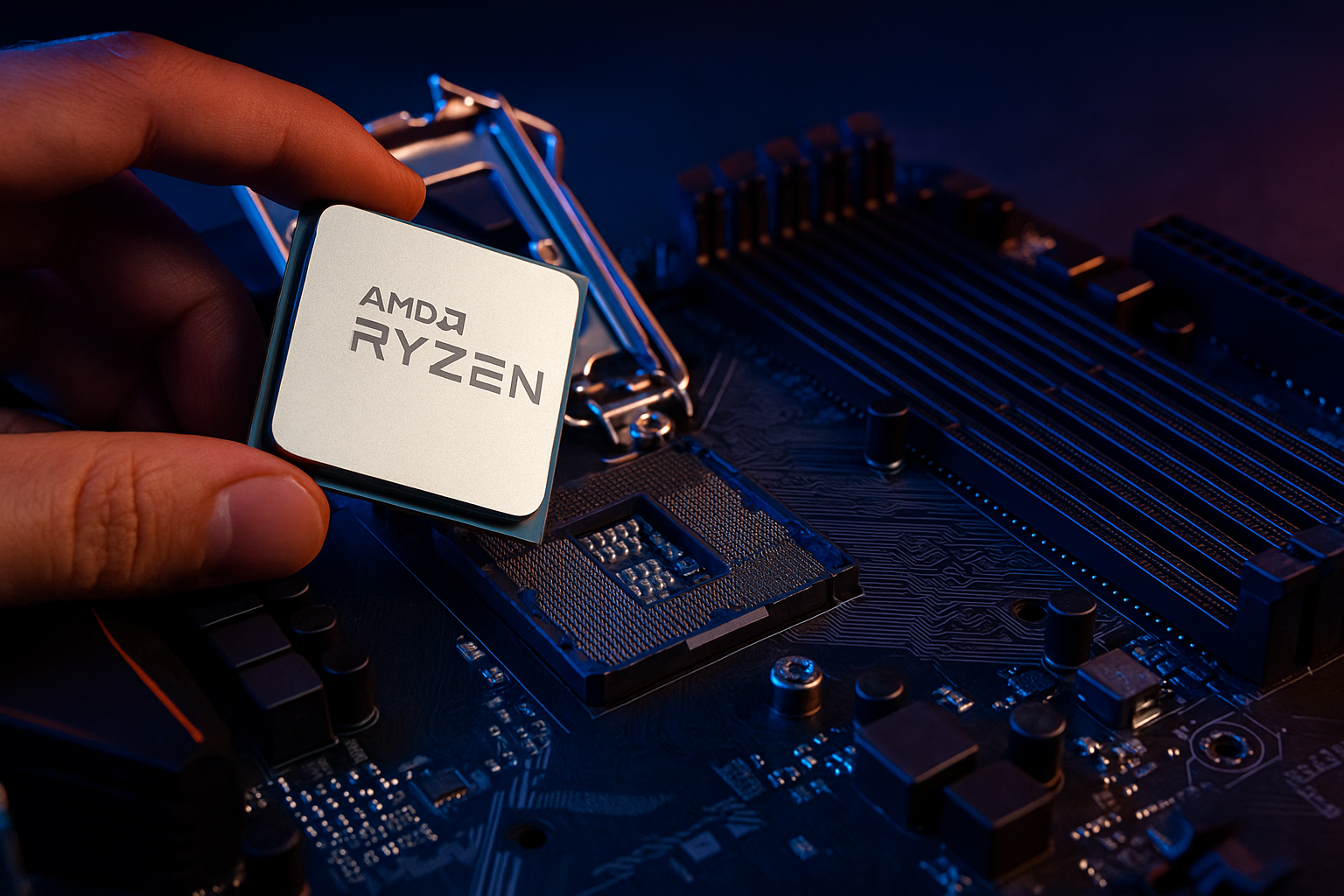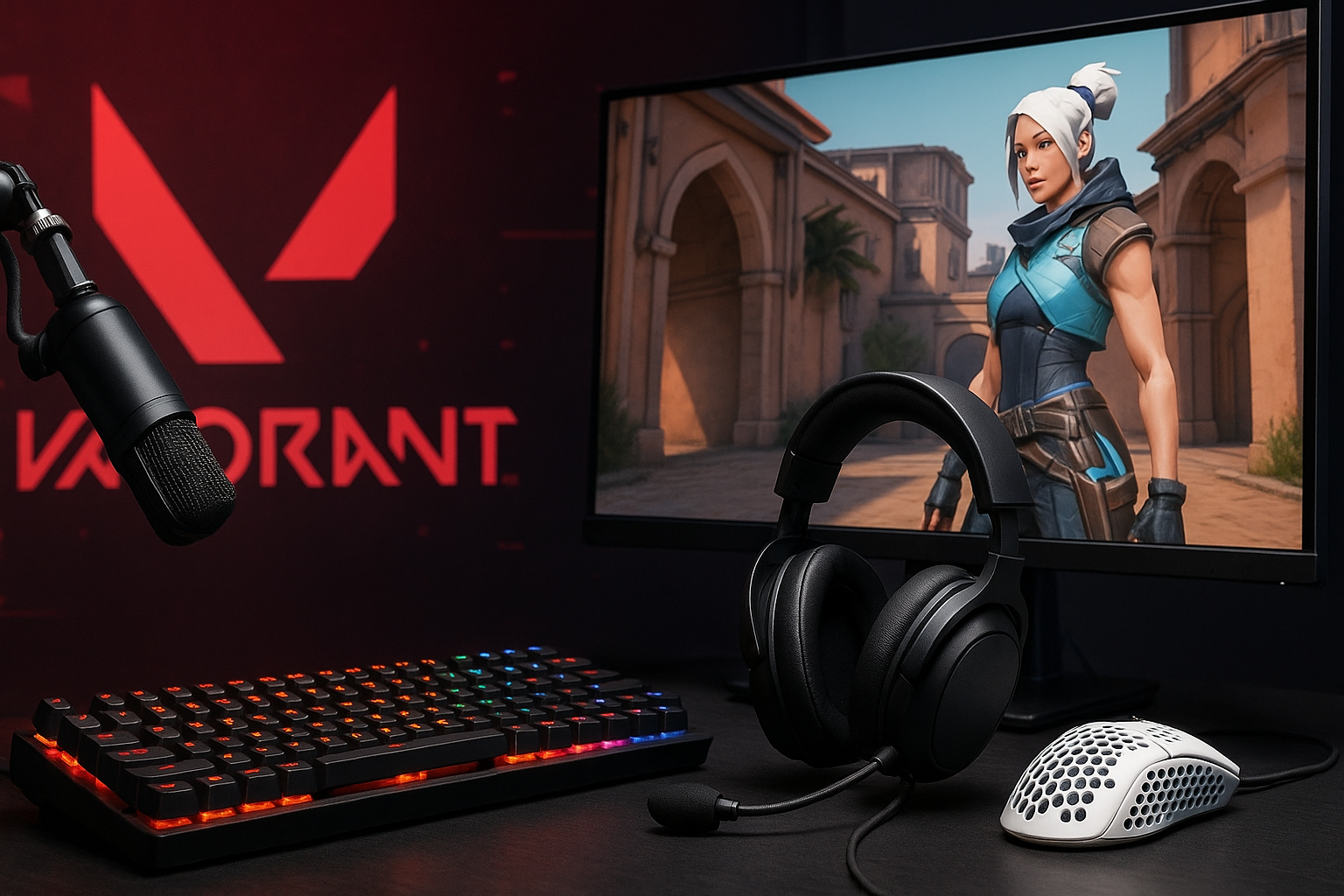
Best Gaming Keyboards & Mice for Valorant in 2025 – Precision, Speed & Pro Picks
By: pcbuildhelper Editorial Team | Updated: 8/30/2025
If you’re asking “What’s the best mouse and keyboard for Valorant in 2025?” the answer comes down to speed, precision, and pro-level reliability. Valorant is a game where milliseconds decide clutch encounters, and every detail of your setup—mouse sensor accuracy, weight, click latency, and keyboard actuation speed—can change the outcome of a round.
In 2025, top players and esports pros rely on ultra-light, high-DPI mice paired with fast mechanical keyboards that use Hall effect or optical switches. With 8000 Hz polling rates now more common, both wired and wireless options deliver near-zero latency, giving competitive players confidence in every flick and keypress.
This guide highlights the best Valorant mice and keyboards of 2025, including:
- Lightweight FPS mice trusted by professional players.
- Mechanical and Hall effect keyboards with lightning-fast actuation.
- A breakdown of wired vs wireless setups and which pros use them.
- Gear endorsed or used in current pro Valorant tournaments.
Whether you’re climbing ranked or competing in tournaments, these are the peripherals that sharpen precision and speed in Valorant’s fast-paced environment.
TL;DR – Top Picks at a Glance
- Best Mouse Overall: Razer DeathAdder V4 Pro – 56 g, 45 K DPI, 8000 Hz polling, trusted by competitive gamers.
- Best FPS Lightweight Mouse: Razer Viper V3 Pro – ~58 g, Focus Pro 35K sensor, used by 174 pro Valorant players.
- Best Touch Wireless Value Mouse: HyperX Pulsefire Haste 2 Pro – 61 g, 26 000 DPI, 4000 Hz polling.
- Best Gaming Keyboard (Hall Effect): NuPhy Field75 HE – 8 K polling, adjustable actuation, rapid trigger support.
- Best Pro‑Endorsed Keyboard: Razer Huntsman V3 Pro TKL – used by pro CS2 and Valorant players, optical high‑speed switches.
- Best Wireless Competitive Keyboard: NZXT Function Elite Mini TKL – Hall‑effect switches, rapid trigger, 8000 Hz polling.
Lightweight FPS Mice with High‑DPI Sensors
Razer DeathAdder V4 Pro
- Specs: ~55–56 g, Focus Pro 45 K Gen‑2 sensor, 8000 Hz polling, mechanical Gen‑4 switches
- Why it works: Crowned PC Gamer’s best gaming mouse of 2025 for unmatched precision and grip comfort
- Pros: Ultra-lightweight, smooth coating, excellent tracking and polling, highly ergonomic design
- Cons: Premium price (~$170), wired or wireless versions available
Razer Viper V3 Pro
- Specs: ~58 g, Focus Pro 35K sensor, 8000 Hz polling (dongle included)
- Why it stands out: Rated by prosettings.net as the top Valorant mouse used by 174 pro players in mid–2025
- Pros: Extremely responsive, lightweight, great battery life (95 hours at 1k Hz), seamless switch between wired/wireless
- Cons: Slightly more expensive than older models
HyperX Pulsefire Haste 2 Pro 4K
- Specs: ~61 g, up to 26 000 DPI, 4000 Hz polling rate, optical switches
- Why it’s great: Featured in Wired’s 2025 mouse roundup as a lightweight alternative to pricier picks like Logitech and Razer
- Pros: Lightweight honeycomb design, superb value (~$120), high polling and DPI
- Cons: Slightly heavier than the ultra-light category; polling rate difference may be unnoticeable to most users
Fast Mechanical Keyboards with Low Latency
NuPhy Field75 HE
- Features: Hall‑effect switches, adjustable actuation, software SOCD/rapid trigger, 8000 Hz polling
- Why it's ideal: Offers deterministic input timing and customizable sensitivity—valuable for tight Valorant actions
- Pros: Ultra-low latency, customization flexibility, top-tier quality for competitive play
- Cons: Niche design, slightly steeper learning curve
Razer Huntsman V3 Pro TKL
- Features: Optical switches, 1 ms report rate, TKL for full mouse‑wrist movement space
- Why pros choose it: Used by CS2 pros including NiKo and others; proven in high‑level FPS esports
- Pros: Fast actuation, durable, compact layout with full performance range
- Cons: Keys are loud; not ideal if silent typing is important
NZXT Function Elite MiniTKL
- Features: Hall‑effect switches, adjustable actuation (0.6–4.0 mm), rapid trigger and Snap Tap, 8000 Hz polling
- Why it matters: Delivers premium competitive keyboard features at mid-range price, strong Windows Central reviews highlight responsiveness.
- Pros: Low-latency, programmable dual-action keys, lightweight TKL build
- Cons: Wired only; bulkier interface may not suit all
Wireless vs Wired: What Pros Choose
- Top-tier mice like the Viper V3 Pro and DeathAdder V4 Pro offer both wired and wireless modes, with 8000 Hz polling and minimal latency comparable to wired gaming.
- Keyboard choices in competitive setups tend to favor wired connections due to consistent polling and zero interference. Wireless keyboards—even those with Hall‑effect switches—are rare in pro Valorant settings.
- For mice, wireless is now acceptable at the highest level so long as polling and sensor reliability are uncompromised. Keyboards, especially for clutch inputs and macros, still mostly rely on wired USB connections in tournaments.
Pro Player Setups and Endorsements
- Razer Viper V3 Pro is used by 174 Valorant pros as of mid‑2025, cited as the FPS gaming benchmark for speed and accuracy.
- Razer DeathAdder V4 Pro was unanimously named PC Gamer’s best gaming mouse of 2025 for FPS titles like Valorant and CS2.
- Razer Huntsman V3 Pro TKL is highly favored among CS2 professionals (NiKo, YEKINDAR, magixx). While primarily CS2, these players often use the same keyboard across Valorant and CS2 tournaments.
Final Thoughts
For mice:
- The Razer DeathAdder V4 Pro and Viper V3 Pro are top-tier options, delivering ultra-light weight, high polling, and top-grade sensors used by pros.
- Considering weight, price, and polling: HyperX Pulsefire Haste 2 Pro is a great mid-range alternative offering similar performance at lower cost.
For keyboards:
- The NuPhy Field75 HE and NZXT Function Elite MiniTKL both push elite-level latency with Hall‑effect switches and ultra-high polling rates.
- The Razer Huntsman V3 Pro TKL is the go-to for many pro FPS gamers thanks to its reliability, aggressive actuation, and strong esports pedigree.
In competitive Valorant, lean toward wired keyboards, but wireless mice are fully acceptable when performance is uncompromised. The most effective peripherals—used by pro players and streamline setups—combine lightweight, high-DPI mice with low-latency mechanical keyboards, emphasizing precision, speed, and responsiveness.
Editorial Team
Every guide on pcbuildhelper is created by our editorial team of experienced PC builders, gamers, and engineers. We combine hands-on testing, community insights, and trusted industry data to make sure our recommendations are practical, accurate, and up to date. While we use AI to assist with research and formatting, all final content is reviewed and validated by our human team to ensure clarity and trustworthiness.
Related Articles

Best AMD Processors for Gaming in 2025 (Ranked by Price/Performance)
Discover the top AMD gaming CPUs of 2025—ranked by price-to-performance. Whether you're budget-conscious or aiming for premium gameplay, get insights, specs, and recommendations for every tier.
8/22/2025

Valorant Pro Gear & Peripherals Guide: What Top Players Use
See the exact gear Valorant pros use—mice, keyboards, monitors & headsets. Find out which pro equipment can boost your aim, speed & comfort.
9/19/2025

Best 27-Inch 1440p Gaming Monitors (2025) – High FPS & Competitive Play
Find the best 27-inch 1440p gaming monitors in 2025 for high FPS performance. Compare the top QHD displays with 240Hz refresh rates, low latency, and vibrant visuals for both competitive and casual gaming.
8/30/2025

How to Build a Custom PC in 2025 – Parts List, Steps & Pro Tips
Build a custom PC in 2025 and skip the prebuilt tax. Get step-by-step help, exact parts lists from ~$800 to $2,000, and upgrade-ready picks with no bottlenecks.
11/25/2025

RTX 5070 Ti vs RX 9070 XT (2025) – Best GPU for 1440p, 4K & Esports
Compare RTX 5070 Ti vs RX 9070 XT in 2025. Benchmarks, FPS, pricing, and features to find the best GPU for 1440p, 4K gaming, ray tracing, and esports.
9/19/2025